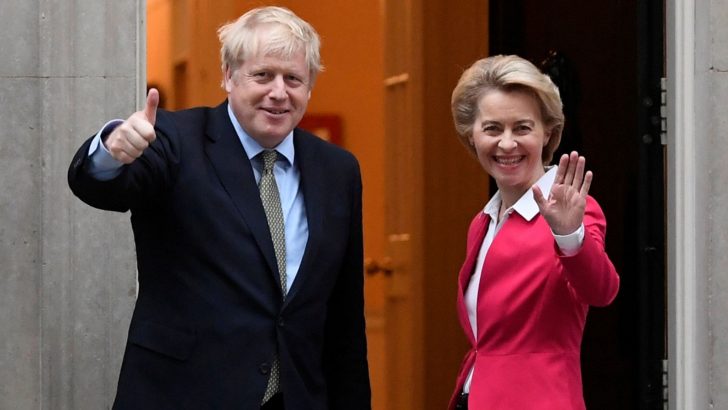Were I asked to do so, I think I would propose Ursula von der Leyen, the President of the European Commission, as my Person of the Year.
Leadership
As the head of the operational side of the EU, she has shown leadership, grace under pressure, and when the EU-British deal was pronounced done, a cultural hinterland in quoting both Shakespeare and T.S. Eliot.
From Shakespeare, she described Britain’s exit with “parting is such sweet sorrow”. And from T.S. Eliot, a profoundly Christian voice (he was Anglo-Catholic), she cited that thoughtful but enigmatic line from Little Gidding: “What we call the beginning is often the end. And to make an end is to make a beginning.”
But it is not just for her stewardship of what was sometimes a grouchy and ill-tempered series of negotiations that Frau von der Leyen deserves praise. She has also proved a significant point for women, and a positive example for feminism.
It has been regularly claimed that being a mother, and especially being a mother of a large family, is a serious hindrance to a woman’s ambition and achievement. From Simone de Beauvoir onwards, pregnancy has been identified as the main obstacle to women’s equality in the working world.
French President Emmanuel Macron even once said that no woman would choose to have a large brood of children.
Supports
Well, step forward President Ursula von der Leyen: mother of seven.
It’s evident from her CV that certain supports are needed for women to achieve in their working lives as well as having children. These are: education (she’s attended good schools and universities, and holds a PhD): support from parents and the social capital that goes with it: marriage to a supportive husband: and yes, the financial structures which may underpin it.
But when society provides the backup for education, a career path, and motherhood, it can all be combined harmoniously.
And incidentally Ursula von der Leyen has indicated that raising seven children has given her enhanced psychological experience in managing complicated multi-lateral negotiations. I’ll bet! (She spent some years, in the 1990s, as a stay-at-home mother.)
Like Amy Coney Barrett – the US Supreme Court judge, and also mother of seven – and the City of London expert, Dame Helena Morrissey, mother of nine, these women are role-models for a younger generation, and evidence that with the appropriate supports, women don’t need to reject having babies to fulfil their working lives.
A stable marriage is highly recommended, and religious affiliation often seems to figure, too – the Von der Leyens are members of an Evangelical Lutheran church.
Would the EU-British deal ever have happened under the leadership of Jean Claude Juncker? Or did it take a mother of seven kids to move the dial to a compromise agreement?
Placing truth at the heart of the crib
The Christmas Crib, with its sweet composition of Mary, Joseph and the Infant Jesus, surrounded by the shepherds, the ox, the sheep and the ass, is central to the Nativity scene. In Continental Europe, where Epiphany is traditionally more emphatically celebrated, the Three Kings are added on January 6.
But looking at the Christmas crib in our local church (and even the figurines in my own small crib in the house), it occurs to me that these days we need to update the images. In short, some of the representations of the Holy Family really are a little too white.
I don’t go along with all the objectives of Black Lives Matter (defund the police, and the poor will be unprotected, while the rich will hire their own security personnel), but the campaigners have made us more sensitive to issues of colour.
The Holy Family would have looked like Syrians, Palestinians – or Middle Eastern Jews, which they were. The creamy-white complexions of the statues in the traditional crib do seem a little outdated.
The Three Kings (or Three Wise men) are usually seen as more multi-cultural. Edward Burne-Jones’s beautiful 1894 tapestry of the Magi depicts one as white, one darker-skinned, and one black.
It’s usually said that Melchior came from Persia (Iran), Caspar came from India and Balthazar from Arabia.
***
December 29 was the 850th anniversary of the murder of St Thomas Becket in Canterbury Cathedral, in 1170. Thomas was murdered by knights at the behest of the King of England, the French-born Henry II, who had so famously murmured “who will rid me of this turbulent priest?”
St Thomas is a symbol of all martyrs: but he is also, surely, an example of why the church should never be under the power of the state, since the state will always be tempted to subjugate faith to political ends.


 Mary Kenny
Mary Kenny Ursula von der Leyen with Britain’s Prime Minister Boris Johnson
Ursula von der Leyen with Britain’s Prime Minister Boris Johnson 